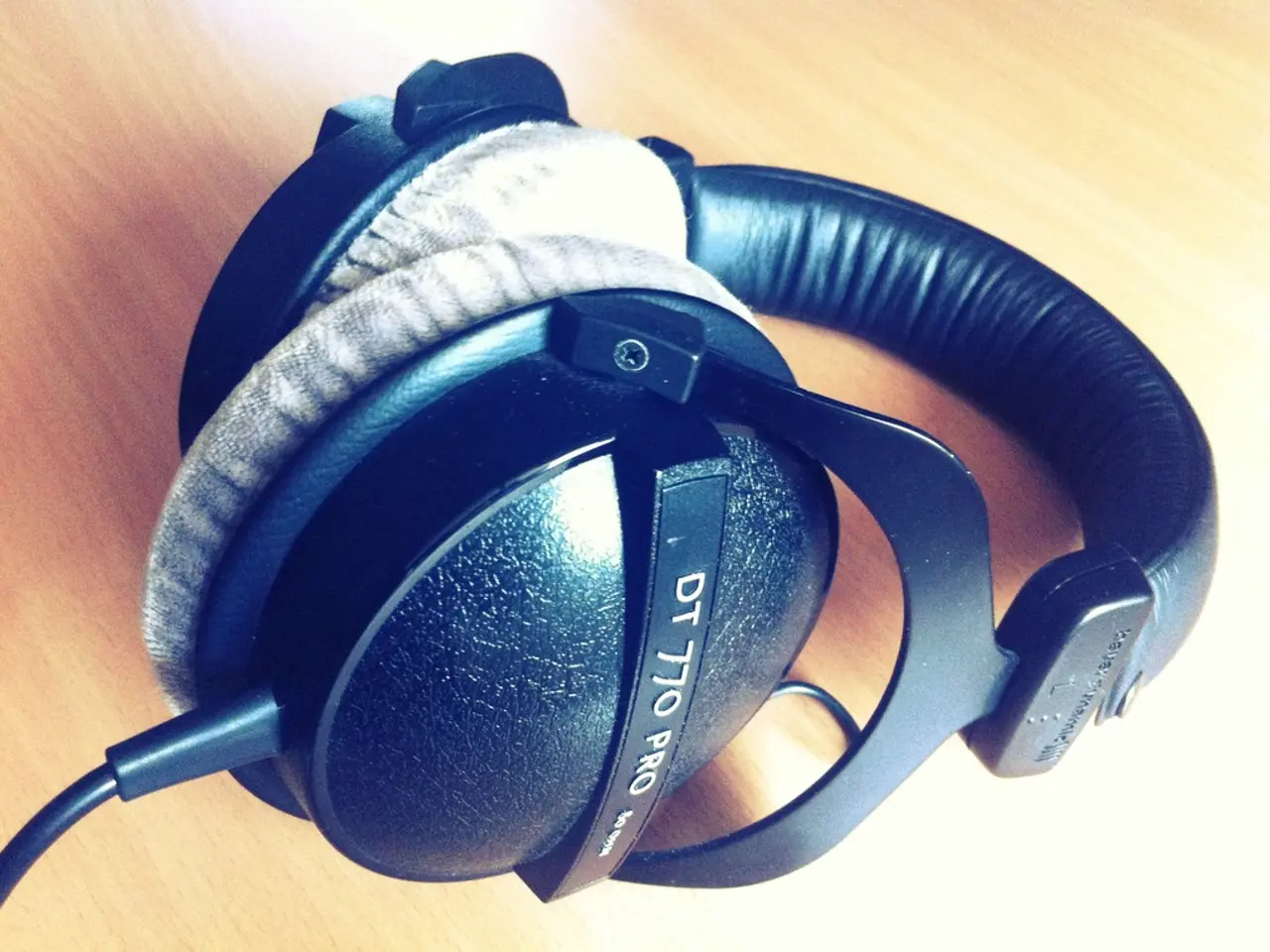Human sensitivity to intense noises: An exploration of why loud and harsh sounds can be painfully unendurable for the human auditory system.
The University of Geneva and Geneva University Hospitals in Switzerland have embarked on a fascinating study to understand why certain harsh noises are difficult to ignore and unbearable for many people. The research focuses on the effects of specific frequency ranges, such as 40-80 Hz, on aversion.
In the realm of neuroscience, harsh noises can induce stress and anxiety, potentially activating brain areas associated with aversion. The auditory system processes sound through the auditory cortex, and unpleasant sounds can lead to increased activity in regions like the amyggdala, promoting an aversive response.
Key brain areas involved in aversion include the amyggdala, hippocampus, and prefrontal cortex. The amyggdala is crucial for processing emotions, particularly fear and anxiety, while the hippocampus plays a role in emotional processing. The prefrontal cortex is involved in decision-making and can influence aversive responses by modulating emotional input.
The study establishes the range of sounds that are rough and unpleasant for the human brain, with the upper limit of sound roughness occurring when the stimulus reaches about 130 Hz. Above this limit, the frequencies are heard as forming only one continuous sound.
Interestingly, when participants heard sounds within the range of 40-80 Hz that they found particularly unpleasant, the amyggdala, hippocampus, and insula, areas related to salience, aversion, and pain, also became active. This finding suggests that harsh sounds trigger aversion brain areas, particularly the amyggdala, hippocampus, and insula.
The researchers also found that there are many illnesses, such as Alzheimer's, autism, and schizophrenia, that show atypical brain responses to sounds at 40 Hz. This finding opens up a new avenue for research into the relationship between brain function and neurological conditions.
The researchers used an intracranial electroencephalogram to monitor brain activity in response to sounds. For some of their experiments, they played participants repetitive sounds with frequencies between 0 and 250 hertz (Hz) and at progressively shorter intervals to determine the point at which some of these sounds became unpleasant.
The study is significant as it ties into aspects of communication, with the researchers explaining that a primary purpose of communication is to catch the attention of others. Going forward, the researchers plan to conduct more detailed research on the brain networks that respond to harsh sounds.
The team worked with 27 healthy participants aged 20-37 years for their experiments, with 15 being female and 12 being male. The researchers asked participants when they perceived the sounds as being rough (distinct from each other) and when they perceived them as smooth (forming one continuous and single sound).
Unfortunately, the search results do not provide information about a specific study by the University of Geneva or Geneva University Hospitals regarding the effects of harsh noises in the 40-80 Hz range on aversion brain areas. However, the general insights into how noise might affect the brain and trigger aversion, as well as the findings from this intriguing study, offer a fascinating look into the complex ways our brains process and respond to sound.
- In the field of neurology, harsh noises at specific frequency ranges can induce stress and activate brain areas associated with aversion, such as the amyggdala.
- The study highlights that certain neurological disorders, like Alzheimer's, autism, and schizophrenia, show atypical brain responses to sounds at 40 Hz, which opens up a new avenue for mental-health research.
- The auditory cortex processes sound in the human brain, and unpleasant sounds can lead to increased activity in regions like the amygggdala, promoting an aversive response.
- The researchers used science and health-and-wellness tools, like an intracranial electroencephalogram, to monitor brain activity in response to sounds, focusing on the 40-80 Hz range and determining the point at which sounds became unpleasant.
- The roles of the hippocampus, prefrontal cortex, and insula in aversion responses, particularly with regards to harsh sounds, were also explored in the realm of psychology and neurology during this study.




